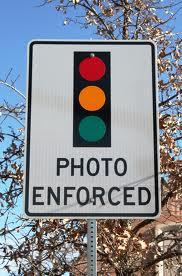This horse is dead. Please stop beating it.
Gone
Four years after Houston voters rejected red-light cameras, the divisive issue unexpectedly resurfaced Tuesday when police officials presented figures indicating that removing the cameras made 51 busy intersections more dangerous.
Auto crashes have more than doubled at those intersections since voters banned use of the cameras in a 2010 referendum, according to figures presented to a City Council committee by the Houston Police Department.
Executive Assistant Chief Tim Oettmeier acknowledged the analysis was imprecise, however, noting that the data did not split neatly into four years of collisions when the cameras were in place and four years when they were not. In addition, Oettmeier said police did not examine the traffic counts at those intersections to see if the increase in collisions might be related to the streets being busier.
Oettmeier did discuss citywide crash figures, which show steady increases over the last four years.
The red light camera statistics were only a slice of Oettmeier’s presentation, which focused on HPD’s proposal to increase the force by 590 officers over the next five years. The discussion follows a staffing study that showed the department is short-staffed in some areas and did not investigate 20,000 cases with workable leads last year.
Some council members questioned the methodology behind the red light crash data and the purpose of including it in the presentation. Among them was Councilman Michael Kubosh, a bail bondsman who, with his brothers, led the 2010 referendum effort that got the cameras banned.
“I don’t know why it’s in this report,” he said. “There’s a charter amendment that says we’re not going to do this. There was a vote of the people; the people said no, and why you even waste your time to put this in the report to us today, I do not know. Maybe it’s that I’m sitting on council – that’s the only reason I can see.”
Oettmeier did not respond to Kubosh’s comments, but said later that he included the camera information to anticipate questions about whether HPD still needs as many police officers with its large recent investments in technology.
Red-light cameras are “a thing of the past,” Oettmeier said, adding he had no “hidden agenda” in mentioning them Tuesday. City Attorney David Feldman confirmed the city would not be able to deploy red light cameras without another public vote.
“The red light camera portion of the presentation was just an attempt to validate that that type of technology does, in fact, cause an effect, and it does help police officers out,” Oettmeier said.
That’s all very nice, and I get that Oettmeier was speaking in the context of HPD staffing levels and personnel needs. But seriously, just stop. We are not going anywhere near red light cameras any time soon, for good reason. Plus, no one who doesn’t already believe in red light cameras buys the crash data. Hell, I spent way too much of my life trying to make sense of the various crash studies done here in Houston, and I have a hard time accepting any of it. Just make your case for more traffic officers and leave it at that, OK? Thanks.


I am not real sure but I think I just agreed with kuffner on red light cameras.
I hope you’re seated Paul because all three of us agree. 😉
As I suggested previously, “Executive Assistant Chief Tim Oettmeier” needs to go swill the grapes elsewhere if his big contribution of late is to try and jump start the red light camera program. His total compensation from the city and pension is probably in excess of $300k but every time his name is mentioned I wonder if the city could put him to better use writing parking tickets somewhere downtown.